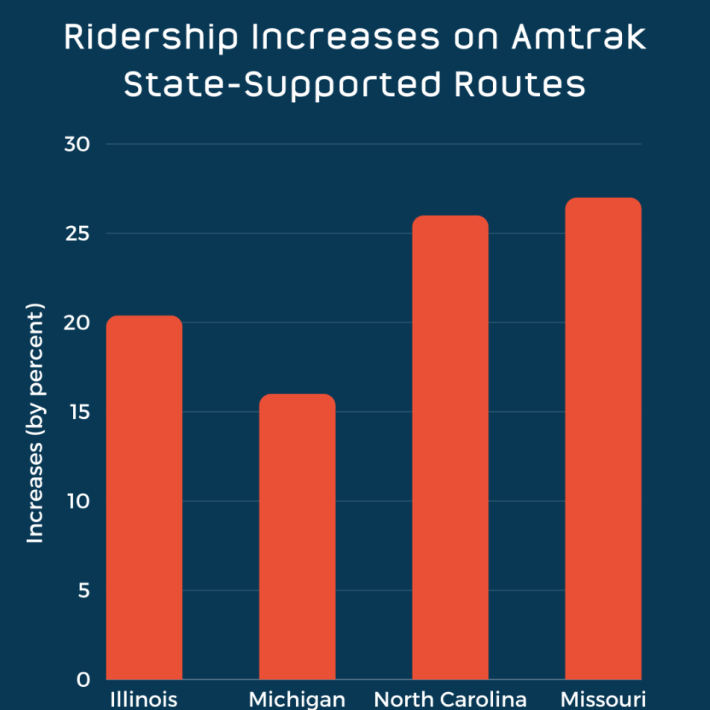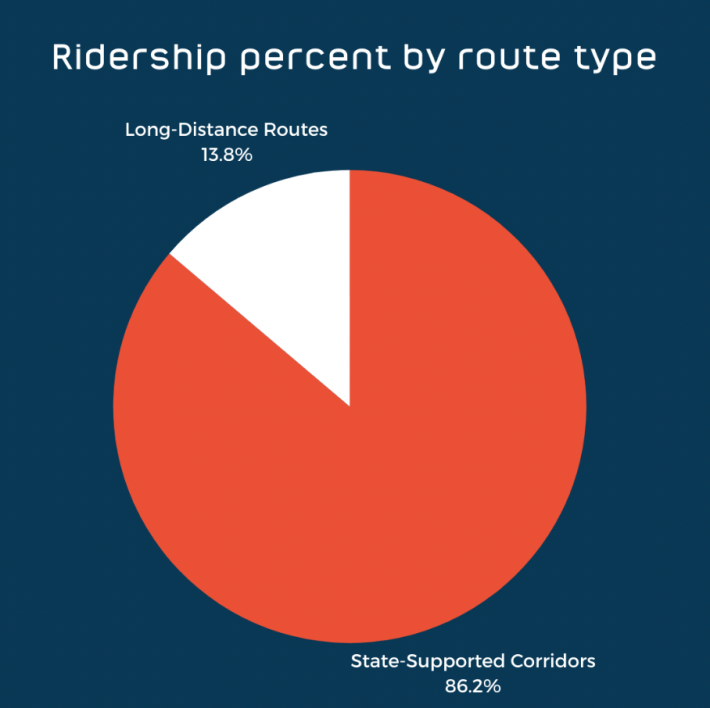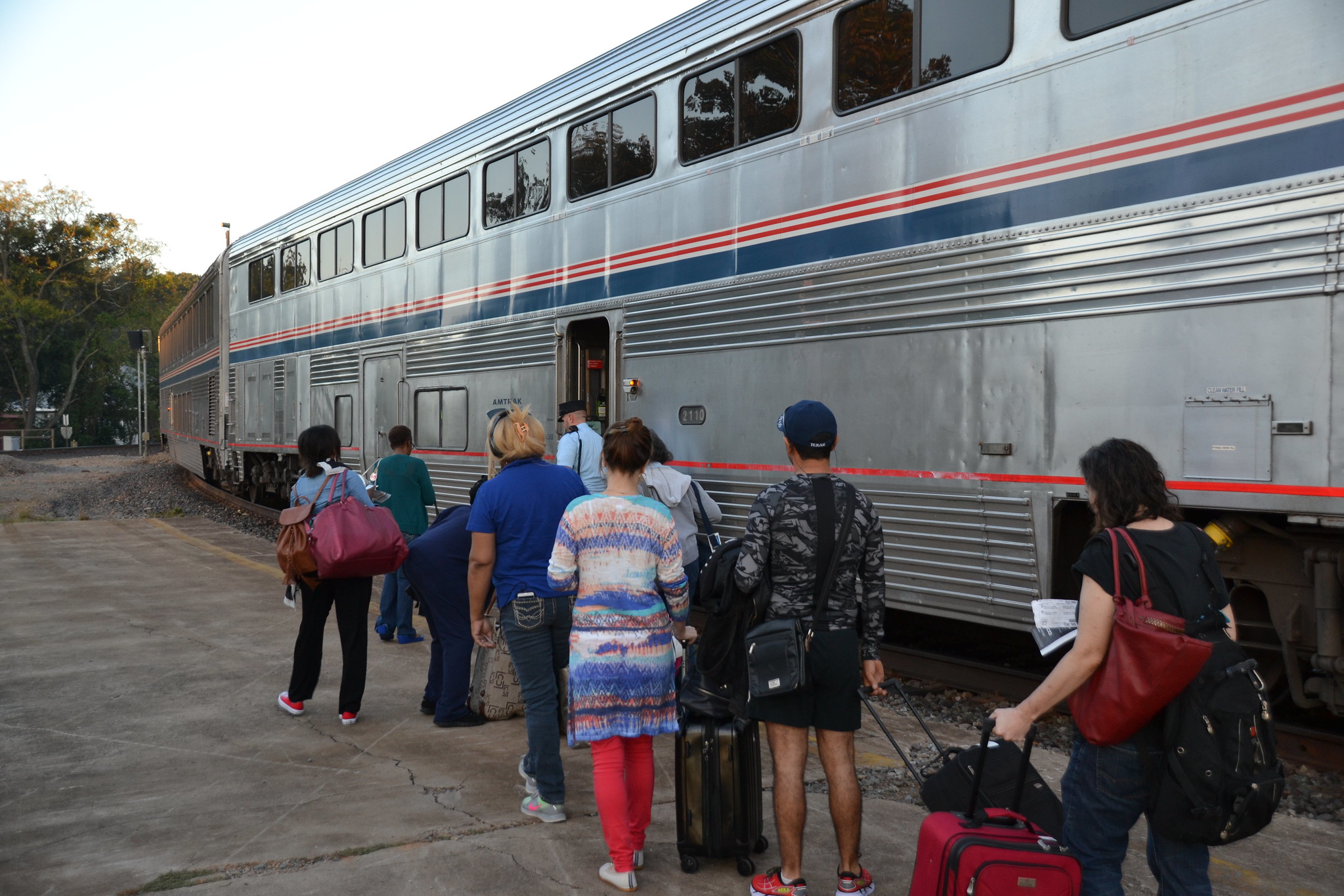Editor's note: This article originally appeared on Rail Passengers and is republished with permission.
Most rail passengers in the United States aren’t going over 400 miles in a trip. A lot of them are going one way and are on state-supported corridors.
This has been to Amtrak’s benefit, with their ridership growing by 55% since the 90s by in large through in the Northeast Corridor. Recently, increases in other state-supported corridors in Illinois, Michigan, Virginia, Texas, Oklahoma, North Carolina, and Missouri are happening too.

The answer to continuing passenger rail’s growth in the United States seems clear then – build more short-distance, state-supported corridors in heavily populated metro areas that link two or more cities together.
But who rides long-distance passenger rail routes?
The Long-Distance Riders
Routes going 750-2,500 miles are considered long-distance routes for Amtrak. They only make up around 13% of the agency’s ridership. This isn’t a big number, only around 3 million of the 28 million total riders of Amtrak’s 2023 fiscal year.

So, who are on these trains?
A lot of the time, it is people looking for a land vacation – the journey, not the destination.
Urban planner Danya Sherman views these long-distance trains as a public space. They are “democratic in that it serves people across many different communities, geographies and interest groups. It is diverse in that it appeals to a broad spectrum of people across ages, ethnicities, races, nationalities and genders, and critically, it facilitates connections between these different people,” according to Sherman.
On the train, Sherman ran into a lot of folks. A gay couple going to Houston, a Latino family headed to Albuquerque, an indie rock-loving pizza-maker from Austin, a minister going to Tucson, and an L.A.-bound retired merchant marine who taught her how to play dominoes.
But these routes aren’t just for an eclectic collection of people enjoying a long trip.
For a lot of people, there isn’t another option. As an Amtrak spokesperson put it, trains “serve many locations where air service is nonexistent or very expensive, and we are often a lower-priced option without the environmental costs of flying or driving."
For people in rural communities, there may not be another option. Beyond the metropolitan glamor of Chicago, Houston, Los Angeles, New York City, and Boston, people do not have varied options for travel.
In many ways, they are the only source of connection for people who many do not think about very often.
The “Flyovers”
Rural communities like those in Montana, Idaho, and North Dakota often lack regional airport access. When airlines were deregulated, it allowed them to choose their service areas and focus on who they wanted to market to.
The original list of communities eligible for government subsidies after the deregulation of airlines had around 620 names. Now, it’s at 110 in the continental United States. Along with the “hub and spoke” system of large airports connecting people to smaller ones, it means that urban communities get the most choices and access to flying.
The Essential Air Service has attempted to bridge this gap and provide people in rural communities with air service, but the cost of the program is rising and as of 2020 no new airports are allowed in the program, according to Rural Insights.
This has been great for airline profits — around 223 billion dollars in 2023 alone. For people in the “flyover states?” Not so much. And that’s not even including people with disabilities.
1 in 4 Americans have a disability and there are around 25 million total Americans who have a disability that limits their ability to travel by air. Roughly 7.6 percent of the U.S. population cannot travel by air, or at the bare minimum do it as easily as most of us can.
So this raises a question – who does passenger rail serve?
The Answer is Everyone
One of the benefits of public transportation like passenger rail is that it serves demographics that deal with limited mobility, such as people with disabilities or rural communities.
But passenger rail isn’t just serving those folks. The Northeast Corridor moves people around for business trips, and state-supported routes bring people to family, friends, sports, college, and much more.
Rail will probably never overtake plane travel. The U.S. is a big place, and sometimes people need the fast option. And frankly, that’s okay. The goal of more options is just that – more. It isn’t about reducing, it’s about adding. When people have more options, costs are kept down, and more importantly, people have the freedom to choose how they move.
A lot of people argue against passenger rail because it is slower than flying, that no one wants to ride it (Amtrak’s ridership gains say otherwise), or that it’s crime-ridden (which is just not true).
But there’s one crucial thing about passenger rail and every other form of public transit. It’s for everyone.
We can’t say we are a free country without mobility for people. Are rural communities supposed to be confined to where they are without a car? Should disabled people just stay home if the only choices are a car or plane? What about people not around the highway system if they can drive?
In short, passenger rail serves everyone – even the people who don’t meet the profit margins of airlines and car manufacturers. That’s why it matters, even the routes that aren’t going to get tens of millions of riders because it is still serving the millions who may not have another option without it.






